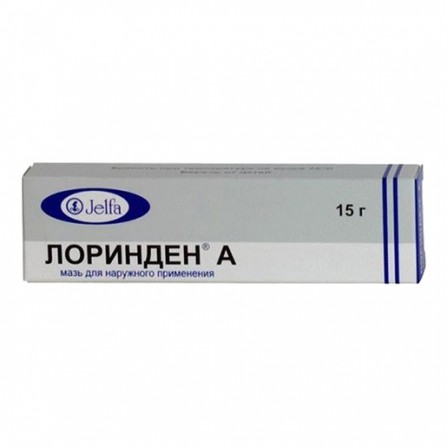More info
Active ingredients
Salicylic acid + Flumetazon
Release form
Ointment
Composition
Flumethasone pivalate 200 mcg, salicylic acid 30 mg. Adjuvants: propylene glycol - 50 mg, lanolin - 50 mg, vaseline - up to 1 g.
Pharmacological effect
Combined preparation with anti-inflammatory and keratolytic action for external use. Flumetazon pivalat is a synthetic GCS, has anti-inflammatory, anti-edema, anti-allergic, antipruritic action. Inhibits the activity of phospholipase A2, which leads to the suppression of the synthesis of prostaglandins and leukotrienes, inhibits the release of inflammatory mediators. It inhibits the migration of leukocytes and lymphocytes to the inflammatory focus. It prevents the regional accumulation of neutrophils, which leads to a decrease in inflammatory exudate, cytokine production and inhibition of macrophage migration, as a result of which infiltration and granulation processes are reduced. Inhibits the proteolytic activity of tissue kinin, retards the growth of fibroblasts, prevents the development of connective tissue in the inflammation. Reduces hyperemia, manifestations of hypersensitivity reactions, proliferative and exudative processes occurring in the connective tissue in the focus of inflammation. Salicylic acid - NSAIDs, contributes to the penetration of GCS and gives the drug additional antiparakeratoznoe, moderate keratolytic and local hypothermic properties, contributes to the penetration of flumethasone into the skin. In addition, it has antibacterial and fungicidal action, and also restores the protective function of the skin. Suppresses the secretion of sebaceous and sweat glands.
Pharmacokinetics
Absorption: Flumethasone pivalate absorption is higher in children than in adults and increases when applied in the area of skin folds, on the face, on skin with damaged epidermis and skin affected by the inflammatory process, under occlusive dressings, when applied to large areas of skin (in this case may have a systemic effect). Distribution: Due to the external route of administration and the keratolytic effect of salicylic acid, flumetasone pivalate easily penetrates into the stratum corneum of the skin, through the stratum corneum of the skin, where it accumulates. Metabolism: Flumetazon pivalate is practically not metabolized in the skin.After a slight absorption into the systemic circulation of flumethasone, pivalate biotransformed in the liver. Excretion: Excreted in the urine and, to a lesser extent, in the bile in the form of compounds with glucuronic acid, as well as in small quantities in unchanged form.
Indications
Acute and chronic allergic dermatoses, especially accompanied by excessive keratinization of the skin: - atopic dermatitis — diffuse neurodermatitis— chronic lichen Vidal — various forms of subacute and chronic eczema (especially horny) —hyperkeratosis (eg ichthyosis) —chronic dyshidrosis — psoriasis — seborrhea — red lichen - red warty versicolor — as part of combination therapy for cystic skin diseases (including cystic eruptions on the skin of the palms and soles of the feet) —scallop with severe lichenisation — photodermatitis— multifocal mnaya exudative eritema- outer otit- discoid lupus volchanka- insect bites.
Contraindications
- bacterial skin diseases — viral skin diseases (including chicken pox, shingles) - fungal skin diseases — acute moist and subacute exudative stages of skin diseases — skin tuberculosis — skin manifestations of syphilis — skin tumors — precancerous skin conditions — vulgar and rosacea — trophic ulcers of the legs associated with varicose veins — first trimester of pregnancy — infants and young children — hypersensitivity to the components of the drug.
Dosage and administration
Outwardly. The ointment is applied with a thin layer on the skin in the affected area 2-3 times / day. After removal of acute inflammation, the drug is used 1-2 times / day. After the complete disappearance of painful manifestations, treatment is carried out for another 3-4 days. For chronic skin lesions, treatment should not continue for more than 3 weeks. The ointment can also be used as an occlusive dressing, which should be changed every 24-48 hours. In the treatment of lesions on dry and degreased skin areas characterized by severe infiltration, lichenisation, desquamatization and hyperkeratosis, as well as mozolelostyu, the degree of moisture can be adjusted using the thickness applied layer, in accordance with the therapeutic requirements characteristic of each individual case.






